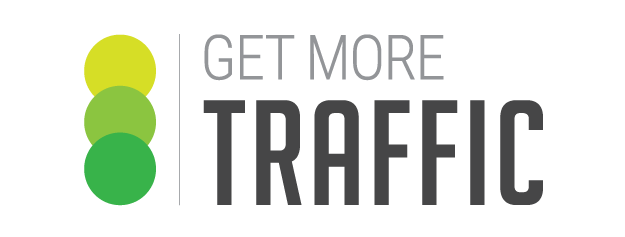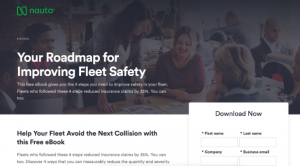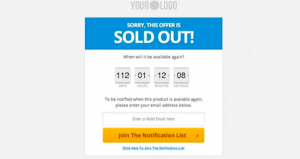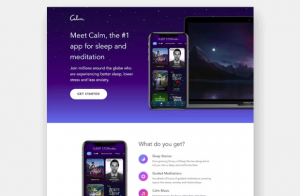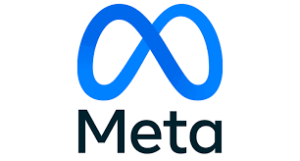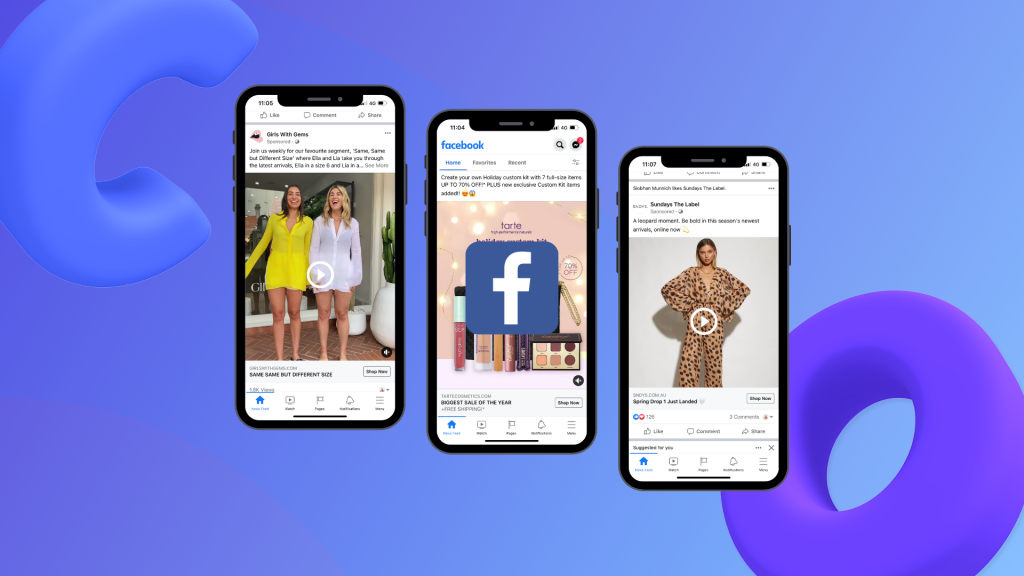YouTube is not only a platform for sharing videos but also a powerful advertising tool that allows businesses to reach a global audience in creative and engaging ways. Understanding the various YouTube ad formats is crucial for creating successful ad campaigns that resonate with your target audience. In this comprehensive guide, we will explore the different YouTube ad formats, their features, benefits, and when to use each format effectively.

Exploring the differences of YouTube Ad Formats:
Skippable Ads
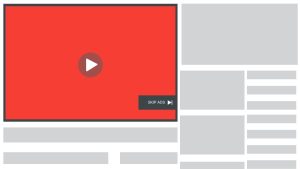
Best for: Maximizing Brand Exposure
Skippable ads, also known as TrueView in-stream ads, are one of the most common ad formats on YouTube. These ads appear before, during, or after a user’s chosen video and can be skipped after the first 5 seconds. The key features include:
- Ad Length: Skippable ads can vary in length, but the first 5 seconds are crucial for capturing viewers’ attention
- Engagement: Viewers can skip the ad after 5 seconds, so creating a compelling hook in the beginning is essential
- Cost: Advertisers are charged when viewers watch at least 30 seconds of the ad of the entire ad if it’s shorter than 30 seconds
Non- Skippable Ads
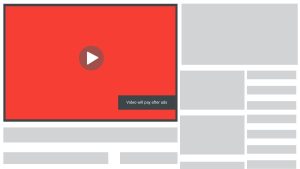
Best for: Conveying Important Messages
Non-skippable ads are short video ads that viewers are required to watch before they can access their chosen video content. These ads are limited to 15 seconds in most cases. Key features include:
- Viewing Obligation: Viewers must watch the entire ad, which can lead to higher engagement
- Message Efficiency: Due to the time constraint, these ads require clear and concise messaging
- User Experience: While they ensure ad views, non-skippable ads can be seen as intrusive if not well-crafted
Bumper Ads

Best for: Delivering A Punchy Message
Bumper ads are short, non-skippable video ads that are limited to 6 seconds. These ads are designed to be concise and impactful, making them ideal for mobile users. Key features include:
- Limited Length: The 6-second limit encourages advertisers to convey their message quickly and creatively
- Mobile-Friendly: Bumper ads are effective on mobile devices, where attention spans are typically shorter
- Frequency: They can be used as a supplement to longer ads to reinforce your message
Overlay Ads

Best for: Prompting a call to action (CTA)
Overlay ads, also known as display ads, appear as banner ads at the bottom of the video player. They can be text-based or rich media ads. Key features include:
- Visual Presence: Overlay ads don’t interrupt the video content and are displayed as a semi-transparent overlay
- Engagement: They encourage viewers to click through to your website or landing page
- CTR Tracking: Overlay ads’ click-through rates (CTR) can help measure their effectiveness
Sponsored Cards

Best for: Showcasing products
Sponsored cards are interactive, content-specific cards that promote products featured within the video or related products. They appear as small teasers within the video. Key features include:
- Contextual: Sponsored cards provide relevant information about the products or services featured in the video
- Interactivity: Viewers can click on the card to see mobile details or visit the advertiser’s website
- Engagement: These cards enhance the user experience by offering additional value
Discovery Ads

Best for: Capturing Intentful Viewers
Discovery ads, previously known ad TrueView discovery ads, are promoted videos that appear in YouTube search results, alongside related videos, and on the YouTube mobile homepage: Key features include:
- Placement: Discovery ads are strategically placed in areas where users are actively looking for content
- Viewer Intent: These ads target users who are more likely to engage due to their search or browsing behaviour
- Thumbnail and Title: The ad’s success depends on an attention-grabbing thumbnail and an enticing title
Masthead Ads

Best for: Broad Audience Impact
Masthead Ads, also known as YouTube’s “Masthead” placement, allow your video to take center stage at the top of YouTube’s homepage on all devices, from desktops to mobile devices and smart TVs. The prime real estate grants you unparalleled visibility and exposure, making it an ideal choice for campaigns aimed at maximum reach and brand impact. Key features include:
- Massive Reach: Engaging a diverse audience with prime placement, ensure that your message reaches users across various demographics and interests
- Visual impact: Capture attention instantly with autoplay visuals
- Clickable CTAs: Direct traffic with overlay CTSs for seamless engagement
10 Steps to Start YouTube Ads

Starting YouTube ads involves careful planning and execution, but the potential to reach a massive and engaged audience makes it worthwhile. By following these 10 steps, you will be on your way to create impactful and successful YouTube ad campaigns that drive your marketing objectives.
1.Define Goals:
Clarify your campaign objectives. Are you aiming for brand exposure, website traffic, lead generation, or sales conversions? Having clear goals will shape your entire strategy
2. Create Channel:
Establish a YouTube channel for your business. This provides a dedicated space to host your video content and manage your advertising campaigns
3. Link Accounts:
Link your YouTube channel to a Google Ads account. This integration allows you to manage and track your ad campaign seamlessly
4. Budget:
Determine your budget for the campaign. Decide whether you want to allocate a specific amount per data or for the entire campaign duration. Google Ads offers various budgeting options to suit your needs.’
5. Audience:
Identifying your target audience. Consider demographics like age, gender, location, and interests. The more precise your audience targeting, the higher the chances of reaching the right viewers
6. Choose Format:
Select the appropriate ad format based on your goals. For instance, if you want to create brand awareness, skippable ads might be ideal. If you have a short, impactful message, bumper ads could work better
7. Craft Content:
Develop compelling video content that resonates with your audience. Start with a captivating hook in the opening seconds to capture viewers’ attention and encourage them to watch further
8. Set tracking:
Implement tracking mechanisms, such as Google Analytics or conversion tracking, to measure the effectiveness of your campaign. This data helps you refine your strategy and understand what’s working
9. Campaign Details:
Configure campaign parameters. Specify the campaign start and end dates, ad scheduling (when your ads will run), and geographic targeting (where your ads will be shown)
10. Launch and Optimize:
Review your campaign settings, content, and targeting one final time. Once you are satisfied, launch the campaign. Continuously monitor key performance indicators (KPIs) like click-through rates, view rates, and conversions. Use these insights to optimize your ads for better results over time
As you navigate the world of YouTube advertising, understanding these various ad formats is essential for tailoring your campaigns to your audience’s preferences and behavious. Each format offers unique advantages, and by strategically using them, you can create compelling and experiences that resonate with viewers and drive your marketing goals.
The key to a successful YouTube ad campaign is not only choosing the right format but also crafting engaging content that captures your audience’s attention and encourages them to take action.
Instagram vs. TikTok: Which Platform Is Right for Your Brand?
Social media has become an integral part of any brand’s marketing strategy, and Instagram and TikTok have emerged as two major players in the social media landscape. Both platforms offer unique opportunities to connect with audiences and promote products or services. However, choosing the right platform for your brand requires understanding their differences, target demographics, and content formats.
In this article, we will compare Instagram and TikTok, helping you make an informed decision on which platform aligns best with your brand’s marketing goals.
1. User Demographics:
User demographics refer to the characteristics and traits of a specific group of individuals who use a particular product, service, or platform. In the context of social media marketing, user demographics include factors such as age, gender, location, education level, income, interests, and behaviors. Understanding user demographics is crucial for businesses and marketers to tailor their marketing strategies and content to better reach and engage their target audience. Understand Instagram and TikTok’s audience and niche communities below:
Instagram User Demographics
- Age:
- Particularly among younger users, especially those aged between 18 and 34 years old, with an increasing number of users aged 35 and above
- Gender:
- Slightly higher percentage of female users
- Interests: Often interested in fashion, travel, food, lifestyle, fitness and photography
TikTok User Demographics
- Age:
- Majority of users falling between the ages of 16 and 24
- Reach Gen Z and younger Millennial consumers
- Gender:
- Relatively balanced gender distribution, attracting both male and female users
- Interests:
- Creatine and entertaining content, including dance challenges, lip-syncing, comedy skits, and educational videos
2. Content Formats:
In social media marketing, content formatting refers to the process of structuring and presenting content in a way that optimizes its visual appeal, readability, and engagement on social media platforms. Effective content formatting enhances the chances of capturing the audience’s attention, conveying the intended message, and encouraging them to take action. Proper content formatting is essential because social media platforms have limited space and user attention spans, making it crucial to make content visually appealing and easy to consume. Here are some key aspects of content formatting in social media marketing between Instagram and TikTok:
Instagram Content Formats:
- Photo-sharing platform, and images are a fundamental content format
- Showcase products, behind-the-scenes glimpses, lifestyle shots, and visually appealing content to capture users’ attention
- Various video lengths, ranging from short stories (15 seconds) to regular posts (up to 1 minute) and IGTV (longer-form videos up to 15 minutes)
- Use Stories to share time-sensitive content, behind-the-scenes footage, polls, Q&A sessions, and interactive stickers like quizzes and countdowns
- Carousels posts allow brands to share multiple images or videos in a single post, which users can swipe through
TikTok Content Formats:
- Primary content format consists of short videos, often set to music or audio clips
- Create entertaining, informative, or humorous videos to showcase products, share tips, participate in challenges, and engage with their audience
- Allows users to interact with content using duets and stitches to create videos alongside existing content, fostering collaboration and interaction
- Known for viral trends and challenges
- Seek educational content, such as DIY tutorials, cooking recipes, and life hacks
- Use live streaming for Q&A sessions, product launches, behind-the-scenes moments, and interactive events
3. Engagement and Reach:
Engagement refers to the level of interaction and interaction your content receives from your audience. It encompasses actions such as likes, comments, shares, saves, and clicks on your posts. High engagement indicates that your content is compelling, relevant, and valuable to your followers. It also signals to social media algorithms that your content is worth promoting, which can boost its visibility and reach.
Reach refers to the number of unique users who see your content. It is an essential metric as it measures the potential size of your audience. A higher reach means your content is being seen by more people, increasing brand visibility and awareness. Reach can be organic, where users discover your content through their feeds, or paid, through social media advertising.
To Improve Engagement:
- Create Compelling Content: Craft visually appealing, informative, and entertaining content that aligns with your audience’s interests and preferences.
- Encourage Interactivity: Use engaging captions and ask questions to prompt discussions. Encourage followers to share their opinions and experiences.
- Respond to Comments: Engage with your audience by responding to comments and messages promptly. Building a two-way conversation fosters a sense of community.
- Host Giveaways and Contests: Organize giveaways and contests to incentivize audience participation and increase engagement.
- Leverage User-Generated Content (UGC): Encourage your followers to create and share content related to your brand, showcasing their positive experiences.
To Improve Reach:
- Use Relevant Hashtags: Research and include relevant hashtags in your posts to improve discoverability and reach a broader audience.
- Optimize Posting Times: Determine the best times to post based on your audience’s active hours to ensure your content reaches more users.
- Collaborate with Influencers: Partner with influencers whose followers match your target audience, expanding your content’s reach to their networks.
- Utilize Social Media Advertising: Invest in paid advertising to reach a targeted audience beyond your current followers.
- Participate in Trending Topics: Engage with trending topics and hashtags to boost the visibility of your content among users following popular trends.
4. Influencer Marketing:
Influencer marketing has become a powerful and popular strategy for brands to reach their target audiences and promote their products or services. It involves partnering with individuals who have a significant following and influence within a specific niche or industry, known as influencers, to create and share branded content. These influencers have built a loyal and engaged audience, which brands can leverage to gain credibility, trust, and visibility.
Types of Influencers:
- Mega-Influencers: These are celebrities, athletes, or public figures with millions of followers. They have the broadest reach but may come with higher costs for collaborations.
- Macro-Influencers: Macro-influencers typically have a substantial following, often ranging from hundreds of thousands to a few million followers. They may have a more focused niche compared to mega-influencers.
- Micro-Influencers: Micro-influencers have smaller but highly engaged audiences, typically ranging from a few thousand to tens of thousands of followers. They often focus on specific niches, making them ideal for targeted marketing.
- Nano-Influencers: Nano-influencers have the smallest following, usually in the range of a few hundred to a few thousand followers. They have strong community connections and are highly trusted by their followers.
5. Hashtags and Trends:
Hashtags and trends are essential elements in social media marketing, helping brands increase visibility, engagement, and reach on various platforms.
Hashtags:
Hashtags are words or phrases preceded by the “#” symbol used to categorize content and make it discoverable to a broader audience. When users click on or search for a specific hashtag, they can find all the posts that include that tag. Here’s how hashtags can benefit your social media marketing efforts:
Trends:
Trends refer to popular topics, challenges, or discussions that gain significant traction and engagement on social media. Participating in trends can have several benefits for social media marketing:
6. Advertising Opportunities:
Advertising opportunities on social media platforms provide brands with powerful tools to reach their target audiences, increase brand visibility, and drive specific marketing objectives. Each social media platform offers a range of advertising options and formats that can be tailored to suit different campaign goals. In terms of Instagram and TikTok Advertising:
Instagram Advertising:
- Owned by Facebook, Instagram offers several advertising options, including photo ads, video ads, carousel ads, and Stories ads.
- Instagram’s visually-driven platform is ideal for brands with compelling visual content and products.
- Brands can target specific demographics and interests, and leverage Facebook’s targeting capabilities for Instagram ads as well.
TikTok Advertising:
- TikTok’s advertising options include In-Feed Ads, TopView Ads, Brand Takeovers, and Branded Hashtag Challenges.
- In-Feed Ads are short-form videos that appear in users’ “For You” feed, while TopView Ads are full-screen ads displayed when users open the app.
Key Considerations:
- Define Clear Objectives: Clearly outline your campaign goals, whether it’s increasing brand awareness, driving website traffic, generating leads, or boosting sales.
- Audience Targeting: Utilize precise targeting options offered by each platform to ensure your ads reach the right audience, increasing the likelihood of conversions.
- Ad Creativity: Create visually engaging and compelling ad content that aligns with the platform’s best practices and resonates with your target audience.
- Budget Allocation: Allocate your budget strategically across platforms and ad formats based on the effectiveness of each channel for your marketing objectives.
- Analyze and Optimize: Regularly analyze ad performance, gather insights, and optimize your campaigns to improve return on investment (ROI).
7. Brand Identity and Storytelling:
Brand identity and storytelling are crucial elements of effective marketing strategies. They go hand in hand to create a unique and compelling narrative that resonates with your audience and sets your brand apart from competitors.
Brand Identity:
Brand identity is the collection of visual and non-visual elements that represent your brand and create a consistent and recognizable image in the minds of your target audience. It encompasses the brand’s logo, colors, typography, tagline, mission, values, personality, and the overall perception it aims to convey.
Storytelling:
Storytelling is the art of conveying your brand’s message and values through compelling narratives. It allows you to engage your audience emotionally, create a personal connection, and communicate the essence of your brand effectively.
8. Analytics and Metrics:
Analytics and metrics are vital tools in social media marketing that enable brands to measure the performance and effectiveness of their campaigns. By tracking and analyzing data, businesses can make data-driven decisions, optimize their strategies, and achieve their marketing objectives.
Types of Social Media Metrics:
- Reach: The total number of unique users who have seen your content. It measures the potential size of your audience.
- Impressions: The total number of times your content has been displayed, including multiple views by the same user. It gives insights into how often your content is being shown.
- Engagement: The level of interaction your content receives, including likes, comments, shares, and clicks. High engagement indicates content relevance and resonance with your audience.
- Click-Through Rate (CTR): The percentage of users who clicked on a specific link or call-to-action (CTA) in your content, indicating interest in further engagement.
- Conversion Rate: The percentage of users who completed a specific action, such as filling out a form or making a purchase, after interacting with your content.
- Follower Growth: The rate at which your social media following is increasing over a specific period, indicating the success of your content and brand appeal.
- Engagement Rate: The percentage of followers who interact with your content (likes, comments, shares) relative to your total number of followers.
- Return on Investment (ROI): The financial return on your social media marketing efforts, calculated by comparing the revenue generated from campaigns to the cost of running those campaigns.
Social Media Analytics Tools:
- Platform Insights: Most social media platforms offer built-in analytics tools that provide valuable data on reach, engagement, impressions, and audience demographics.
- Third-Party Analytics Tools: Several third-party tools provide in-depth analytics for multiple social media platforms, allowing brands to compare performance across channels.
- UTM Parameters: UTM parameters can be added to URLs in social media posts, allowing you to track the source of traffic and conversions in Google Analytics.
- Custom Dashboards: Create customized dashboards in analytics tools to monitor and analyze specific metrics and KPIs relevant to your brand’s goals.
As social media continues to evolve, choosing between Instagram and TikTok requires a thorough understanding of your target audience, brand identity, and marketing objectives. Both platforms offer unique opportunities for engagement, brand exposure, and creativity. By considering the demographics, content formats, advertising capabilities, and analytics on each platform, your brand can make an informed decision on which social media channel is the best fit for reaching and engaging your audience effectively.
Online reputation management for Doctors
Online reputation management for doctors is a crucial aspect of maintaining a positive image and building trust with patients.
Read More: Online Marketing Services for Doctors
Tasks for Online Reputation Management for Doctors
1. Monitoring Online Presence: Online reputation management begins with monitoring your online presence. This involves regularly monitoring various platforms such as search engine results, review websites, social media channels, and healthcare directories. By actively monitoring these platforms, you can stay informed about what patients are saying about your practice and quickly address any negative feedback or inaccuracies.
2. Responding to Patient Reviews: Patient reviews play a significant role in shaping your online reputation. It’s important to actively engage with patient reviews, both positive and negative. Responding to positive reviews shows appreciation and reinforces a positive perception of your practice. Addressing negative reviews promptly and professionally demonstrates your commitment to patient satisfaction and can help mitigate any potential damage to your reputation.
3. Managing Social Media Profiles: Social media platforms provide an avenue for patients to engage with your practice. Regularly updating and managing your social media profiles allows you to present an accurate and positive image. Share relevant content, respond to patient inquiries or comments, and showcase your expertise to build trust and engage with your audience.
4. Optimizing Website Content: Your practice website is a vital component of your online reputation. Ensure that your website accurately represents your services, qualifications, and values. Optimize the content to improve search engine visibility, making it easier for patients to find you online. Regularly updating your website with fresh and informative content helps establish your authority in the medical field.
5. Addressing Inaccuracies: Inaccurate information about your practice can harm your online reputation. It’s essential to regularly audit online directories, review websites, and healthcare listings to ensure that your contact details, practice hours, and services are accurate. Correct any inaccuracies promptly to avoid confusion and provide accurate information to potential patients.
6. Encouraging Positive Feedback: Actively encouraging satisfied patients to leave positive reviews can boost your online reputation. Consider implementing strategies such as requesting feedback after appointments, providing a user-friendly process for leaving reviews, or sending follow-up emails to thank patients and encourage them to share their experiences online. Positive reviews can help counterbalance any negative feedback and enhance your overall reputation.
7. Seeking Professional Assistance: Managing your online reputation can be time-consuming, especially when you need to focus on providing excellent patient care. Consider partnering with a reputable online reputation management service or agency specializing in healthcare. These professionals can help monitor your online presence, respond to reviews, address inaccuracies, and implement strategies to enhance your online reputation effectively.
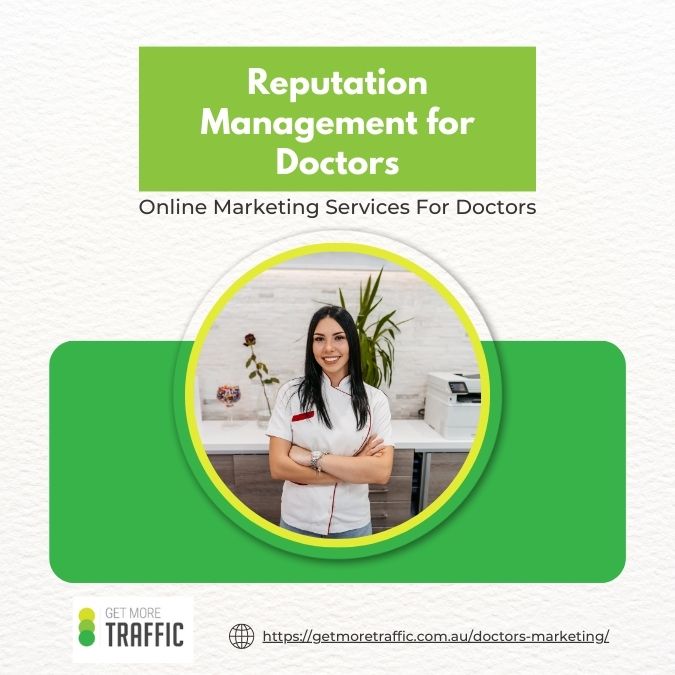
By proactively managing your online reputation, you can maintain a positive image, build patient trust, and attract new patients to your practice. It’s an ongoing process that requires attentiveness, responsiveness, and a commitment to providing exceptional patient experiences both offline and online.
How To Guide: Landing Pages To Engage Customer’s Attention
With COVID-19 impacting local businesses everywhere, people throughout the country are ditching the physical stores and moving online to keep their companies afloat. Over the past two years, digital marketing on the Gold Coast has boomed. Business owners are investing heavily in search engine optimisation, social media marketing, Google Ads, and more. However, without a relevant and valuable landing page to direct traffic to, many local businesses are still missing out on the full potential of digital marketing.
Digital marketing agencies help Gold Coast businesses in a number of different ways, offering them a range of valuable insights they may otherwise have gone without. One of these insights is introducing business owners to the power of landing pages. You may be wondering… What even is a landing page? While we’re not expecting you to know the ins and outs of every marketing tool (after all, that’s our job, not yours!), we guarantee that you’ve visited a landing page at least once.
Designed to convert website traffic into leads, landing pages can help to grow your business and establish your reputation as a relevant and successful brand. Rather than leaving searchers to navigate a multi-page website, landing pages place them on a one-page site containing the exact information they need. Directing your traffic to a specific landing page can reduce your bounce rate, increase conversions and boost your search engine rankings. Now you know what a landing page is, let’s discuss: What makes a landing page good, and what kind of landing pages should your business be looking to create?
What To Put On Your Landing Page
When you’re setting up your landing page, you should be viewing it as a sales pitch to your audience. With only a single page to work with, you’re going to want to create a convincing argument as to why people should go ahead and give you business. No matter what kind of landing page you decide to create, unique selling points are essential for all of them. Ask yourself what makes your business special and why your products/services are a cut above the rest. Then, tell your audience! If you’re stuck for ideas, consider the following:
- Who Made Your Products: In recent years, more people have become concerned with ethics at every stage of the supply chain. From the people responsible for sourcing a product’s materials to those processing their payment at checkout, customers are starting to care. If your business traces its entire supply chain and can guarantee the health and wellbeing of employees at every stage, that’s a major selling point. It’s also just a better way to do business!
- Locally Owned And Operated: Another huge selling point for many people in Australia is knowing that they’re supporting local trade. Not only do local businesses strengthen our economy, but they are also often more personable and can guarantee higher quality products/services. If your business is locally operated, family-run, or offers Australian made products, highlight that on your landing page! While you’re at it, we’d recommend getting certified as Australian Made if you can.
- Covid Policies: Ever since the pandemic, people have been eager to know how the businesses they buy from are operating during covid. Is your company looking after its staff by implementing social distancing, work from home arrangements, and job security? Are customers likely to experience delays due to manufacturing or shipping? Will purchasing from your business help the local economy through this uncertainty? However your company is navigating covid, your customers are keen to know.
- Shipping and Returns: People love to receive things as quickly as possible, and they also want to feel secure in the purchases they make. If your company offers next day shipping, mention it on your landing page. If you have a money-back guarantee on all products, mention that too! Allow your customers to place trust in your business and feel secure in their purchases to encourage their business.
Now that we’ve covered what to put on your landing page, it’s time to go over the types of landing pages you can choose from. These days, there is no “one size fits all” when it comes to landing pages; each one serves its own purpose. With so many different types of businesses investing in digital marketing and Google Ads across Australia, it’s important to find the right landing page for your business to help it grow.
Product/Service Pages
Possibly the most popular choice, landing pages can be great for simply directing traffic toward a page specified to list your products or services. These types of landing pages highlight specific products or services in a generalised way rather than giving them in-depth descriptions and prices. They give customers just enough information to intrigue them while still requiring them to reach out to you to gain access to the full picture. This type of landing page is a great way to generate enquiries and encourage your customer to interact with you.
Seasonal Pages
Highlight holiday promotions on their own dedicated page with a seasonal landing page. These landing pages are a fantastic way to advertise seasonal products, services, and offers in the lead up to national holidays/events. Their main purpose is to prevent your website from looking cluttered and help people to locate your business’ seasonal offers with ease. Landing pages are quick and easy to set up, making them even more appealing for seasonal offers. Simply buy your domain, create a page’s worth of content, and get it ranking!
If you’re confident in web design, you can do all of this yourself. Otherwise, we recommend hiring one of the many digital marketing agencies Gold Coast has to offer (like Get More Traffic. Ahem…) to get your landing page up and running in no time. Once the season is over, you can simply shut the landing page down or better yet, keep it and just rejig it for the next promotion! Just because the event is over, it doesn’t mean you have to remove your page, especially if it’s ranking!
Offer Ended Pages
Continuing on from the previous point, offer ended landing pages can be useful in a myriad of situations. Mostly used after promotional events, these landing pages are popular amongst venues or businesses that host conferences and meetings. All you have to do is let your customer know they’ve missed out on the deal. Then, direct them to one of your current promotions or even just back to your main website’s homepage where they can explore your offers further.
Introduction Pages
Want to introduce people to you or your brand? An introduction landing page is a great way to control your story and provide the most valuable information about your business straight off the bat. These pages can also act as an ‘About Us’, successfully setting the tone of your brand and highlighting your unique selling points in a succinct manner. They’re great for capturing your audience’s attention and reassuring them that you’re a reputable and trustworthy business that is worth their time or money.
Create The Ultimate Landing Page For Your Business With Get More Traffic!
There are so many options when creating the perfect landing page for your business. With so many options to choose from, the marketing possibilities for your business are seemingly endless. At Get More Traffic, we help businesses unlock their full potential online by creating unique landing pages for their websites tailored to their needs. We offer a free landing page to each client who signs up for our Google AdWords PPC Management service.
As one of Australia’s top digital marketing agencies, Gold Coast businesses can rest assured that we have the expertise to provide them with the best landing pages for their brand. Generate more leads for your business and create effective marketing campaign with one of our unique landing pages. Contact Get More Traffic to talk to one of our digital marketing experts and get started today!
How Tradies Can Increase Bookings This Easter
Increasing Your Bookings Over Easter: Advice For Tradies
Do you hear that? It’s Easter, and it’s fast approaching. Don’t panic, though, because we have some tradies marketing advice to help you increase your bookings these Easter holidays. So without any further adieu, let’s cruise right into it.
Advertising For Tradies: The Importance Of Switching Up Your Ads
The truth is, clients know when you’ve done your homework. If you still have your St Pattie’s ads running over Easter, well, then that’s a bit of a problem. Not only does incorrect advertising show potential clients you’re unprepared, but it can reflect poorly on your entire business. ‘If they can’t even update their website, how can I trust them to provide a professional service?’. And look, we know how dramatic that sounds. But, when it comes to beating out the competition, you’ve really got to do all you can to come out on top. So, how do you do that? Well, let us give you some pointers.
Tips For Overtaking The Competition This Easter Period
If you’re keen to fill your books over the Easter holidays, here are some tips to give you a jumpstart:
Get into the spirit. Change your ads to reflect the Easter season. This could look like Easter imagery or some egg-cellent puns sure to capture your audience’s attention.
Promotions/seasonal pricing. You want to start your promotions and offers a little early to ensure that clients know you’re available if your services are needed over Easter. Your ads might look something like: ‘We’re open all of Easter, and because we understand accidents happen, we’re offering our services to clients 24/7.’ ‘Refer a friend this Easter, and we’ll waive your call out fee. That’s our holiday guarantee!’
Use your social media. Engage and communicate with your audience through your social media stories, statuses, and posts. This is not only a great way to strengthen ongoing client/tradesman relationships but is an opportunity to widen your reach.
Implement hashtags. Hashtags don’t need to go viral to make an impact. So making business-specific hashtags you can use over Easter can help increase traffic to your page/s.
Pop-Ups and banners. What better way to increase traffic than through an eye-catching pop-up or banner? No, we don’t mean those annoying ones that clog up your page and deter audiences from engaging. We mean holiday specific banners that are a quick and effective way to relay information to your customers. Like the one below!
Do your research! Finally, look into what your competitors offer and try to do one better. If your competitor is closed over the break, that’s great, but you want to find the best way to come out on top if they aren’t. So, research around to optimise your booking potential.
How Digital Marketing For Tradies Can Help Drive Traffic And Leads To Your Business
Raise your hand if you have a phone on you or within reach. Everybody? Okay, cool. Raise your hand if you have either made a call or sent an email on that phone. Exactly! Most people have. Digital marketing helps put your business at the fingertips of consumers. Here’s how it can help you:
Consistent online presence. Regularly promoting your company on all platforms will help increase your organic reach. This could look like status uploads, images of your work or replies to your reviews.
Local business directories. We can’t say it any louder: PROMOTE, PROMOTE, PROMOTE. And this one is simple because it requires little effort and maintenance. Fact is, the world is going digital, and consumers want businesses to be more accessible than ever. So, start with Google My Business and then get listed other directories like hipages and Tradif so customers can find you when they need you.
Search Engine Optimisation or SEO. Do you have specific keywords you’d like to appear on Google for? Good news because that’s where SEO comes in. Optimising your website for SEO purposes helps you rank higher on Google. So this Easter, try changing up your website copy to reflect your holiday booking needs.
Facebook Ads. Did you know that consumers use their phones more during the holidays? It’s no wonder either; they don’t have jobs to attend! You can take advantage of this, though, and set up ads on Facebook to reach a larger target market.
Google Ads. A common misconception is that tradies should pause their ads over the holidays. However, during this time, your ads are more important than ever. Plus, if everyone else is pausing theirs, you’ll come out on top. So really, you are the real winner here.
For more information about tradies marketing or to increase your reach these holidays, get in touch with our team of digital marketers today.
Make The Most Out Of Your Digital Marketing With The Specialists At Get More Traffic
Is your website a highway at peak hour? Because boy, you’ll be getting a lot of traffic with the help of our digital marketing experts. We’re passionate about helping businesses all over Australia harness the power of digital marketing to take their bookings to the next level. So, if you’re ready to give traffic to your website the green light and learn more about tradies marketing, contact the team at Get More Traffic today!
5 Ways to Set Yourself Up for Google Shopping Success
Over the past year, consumer behaviour has transformed. In 2020, online shopping in Aussie households grew by 57%. In fact, out of 2.3 million low-frequency online shoppers, 52% were spending more time shopping online in 2020. These shoppers were said to have purchased items online at least 10 times between March and December of that year.
The big question is, are you making the most out of your digital marketing to reach these customers, or do you think you could do more? For businesses running Google Shopping ads, what are some ways that you can ensure that you’re making the most out of this opportunity?
We’ve listed below 5 easy steps to help you make sure that you’re doing the right things in optimising your Google Shopping ads. Let’s take a look.
1. Make sure your shopping feed is optimised
What is the Google Shopping feed? At its core, this is basically the spreadsheet that contains a list of all your product SKUs (stock-keeping units). It’s from this spreadsheet that Google sources the data and information it needs to determine whether your products are relevant to a user’s search query.
Just because it’s your product database, however, doesn’t mean that you should simply upload the spreadsheet directly onto the Google Merchant Centre. Doing this can cause problems such as duplicate listings, products not being listed at all, or even the suspension of your account.
To make sure that your database doesn’t run into any compatibility issues, go over it again and make sure that it contains information such as:
- Product ID
- Images
- Stock levels
- Title and descriptions
- Links to product landing pages
For a quick and easy reference, you can always check out Google’s Product Data Specification page to make sure that you have all the necessary information to ensure that your spreadsheet is optimised and ready.
2. Make sure your product descriptions contain relevant keywords
One thing that you have to note is that Google Shopping campaigns are a little bit different compared to Google search campaigns. With search campaigns, you’re bidding on keywords. Whereas with Google Shopping ads, you’re bidding on Product Groups.
But even though the bidding process is different, keywords still play an important role in making sure that your ads convert into clicks.
When writing out your product titles and descriptions, then, keep the customer in mind. Think about what keywords they would type trying to search for your products. It’s best to be specific, especially in the title, as you want to be able to grab your audience’s attention right away and have them say, “This is what I’m looking for.”
3. Continuously work on your Google Seller Ratings
What are Google Seller Ratings? Your Google Seller Ratings are actually your Google customer reviews. These reviews are the best way for you to fortify trust and authority with the audience you’re targeting, especially if they’re a cold audience. The higher your seller rating, the better your clicks and click-through rate will be.
To make your account eligible to display your Google Seller Rating, however, you first have to build up your customer reviews. Google requires that you be able to collect around 100 or more reviews within the last 12 months for them to be able to calculate and showcase your seller rating score.
That means it’s important to be consistent in asking customers for reviews. Create a system within your business wherein you always ask a customer if they could leave a review and you should be well on your way to collecting 100.
4. Pay attention to your bidding
When it comes to Google Shopping success, bidding is definitely something that you have to keep an eye out for. If you’re also currently running Google Ads, it’s important to note that there’s a difference in the bidding process for Google Shopping. For Google shopping, you’re bidding for visibility and not just placement.
Unlike search ads, your bidding strategy with Google Shopping ads will determine whether your ad will show up or not. Here, testing is important. Keep testing to see which bids are working for you. Don’t overbid, as doing so can have your ads appear for more generalised queries, hurting your results in the long run. Bidding high, in this case, isn’t always the best solution.
5. Optimise your campaign structure
Last, but not least, make sure that your campaign structure is optimised and segmented properly. This can make or break your campaign.
Shopping behaviours are different, whether the user is shopping on their mobile devices, or on their laptops and desktops. In 2020, 91% of online shoppers use their mobile phones to make purchases, while 76% did so through a laptop computer, and 61% on their tablets.
Segmenting your campaigns based on the device is one way to structure your campaign, as shoppers on a mobile phone will behave differently than one doing so on a computer. And although a computer is the preferred purchasing device during the holidays, the mobile phone is the winner overall.
Another way you would want to structure your campaign is to segregate your products into different ad groups. Group them according to price. Give your high-priced items more exposure, as they can give you the highest margins, and lower your bidding for your low-priority products. Aim to achieve a sense of balance with your bidding so that you can get the most out of your ad spend.
Of course, all of this can be time-consuming, especially during the holiday season. But that’s why paid ads agencies like Get More Traffic exist. If you’re looking to start or optimise a Google Shopping campaign, feel free to get on a call with one of our agents so that we can discuss how we can best serve you and set you up for success.
August Digital Marketing Industry Updates
Facebook Ads to Include Privacy Enhanced Technologies for Greater Security
Facebook has been looking into creating more secure safeguards and measures for its users while still be able to give them a personalised experience on the platform. To do that, they’ve developed Privacy Enhanced Technologies (PETs) that draw in techniques from cryptography and statistics that will make use of on-device learning. This simply means that the algorithm will now process user data and information on the user’s device rather than store and analyse it on the cloud or a remote server. Keeping the information locally should help keep data secure, while still give Facebook users personalised ads on the platform.
Targeting users under 18 based on age, gender or interests now disabled for Google Ads
As more and more students and children undergo virtual schooling, Google is taking some necessary steps and measures to ensure that they can still stay secure and protected. One policy that Google is introducing is the ability for anyone under 18, or their parent or guardian, to request the removal of their images from Google Image search results. Additionally, Google is adding more protocols and safeguards to protect teens from age-sensitive ad categories. For advertisers, this also means that targeting based on age, gender or interests for people under 18 is no longer allowed. And while this may not greatly impact marketers and advertisers, expect certain audiences to be removed for ad targeting.
Attribution Models Now Applied to YouTube and Display Ads
The benefit of attribution models for Google Ads is that they can help marketers gain a better understanding of the engagement and conversions they receive from their campaigns. Recently, Google upgraded all their Google Ads attribution models so that they are now able to support Display and YouTube ads as well. Together with the upgrade comes the ability to view data for Search, YouTube and Display campaigns all in one place, making it easier to make comparisons between platforms. Additionally, YouTube’s data-driven attribution model is now also able to measure “engaged views”, giving advertisers more insights to their ads and engagement. Finally, the upgrade is a step that further helps marketers further understand a customer’s online journey towards a conversion, so that they can make more informed decisions when optimising their campaigns.
Instagram Test Ad Placements in Shop Tab
In an attempt to give online retailers and shops more support in e-commerce, Instagram is testing out ad placements in their Shop tab to try and distance themselves from relying too heavily on third-party cookies and cross-app tracking. Additionally, having all activity and engagement happen on the Instagram app gives advertisers more insight and control over their campaigns. The ad placements are currently only available to a certain retailers in the U.S. However, after testing, Instagram is planning on rolling out these placements globally in the coming months.
Digital Marketing Industry Updates – June
Latest Updates from Instagram: New Reels & Live Video Analytics, and Likes! (GMT)
Back in 2019, Instagram decided to remove the like counts in Australia to pave the way for a safer internet space. This, of course, posed certain obstacles and limitations for brands and influencers in keeping track of trends and engagement rates. Recently, however, Instagram released a new feature that now allows users to choose whether they want to have the like counts visible or invisible. The new opt-in feature for hiding likes can be found in your privacy settings. However, even though hidden, you can still view like counts through the analytics account.
Instagram also announced the release of new native data for their reel and live video features to help marketers track and analyse their performance. Additional metrics for Reels include plays, accounts reached, likes, comments, saves, and shares. Whereas for live video, the new metrics being rolled out include accounts reached, peak concurrent viewers, comments, and shares. Instagram ensures creators and businesses that these new measurements can better help them understand how well their content is performing. However, these new analytics are only available to Business and Creator accounts. To find them, simply tap on the “Insights” button from your profile page and you can view up your latest metrics for up to 30 days.
New Google Ad Formats for Local Campaigns (GMT)
Several new Google Ads formats were launched late last month centering around local campaigns. These new formats include: Auto-Suggest Ads, Navigational Ads, Similar Place Ads, and Pickup Later ads. All the newly launched ad formats are based on location. First up, Auto-Suggest Ads are shown when a searcher is located close by to a related product or service on Google Maps. Navigational Ads, on the other hand, are shown while a user is using Google Maps driving directions and can be displayed as a user is driving towards a destination. Thirdly, Similar Place Ads appear when the business searched is closed, and so the user is instead shown a similar business on the map, potentially capturing traffic that would otherwise be directed towards competitors. With all these new features in place, local business and advertisers will have more opportunities to reach customers in the surrounding areas using localized results to offer the best user experience.
Goodbye Broad Match Keywords (GMT)
One major updated that happened with Google Search campaigns this 2021 is the phasing out of the Broach Match modifier keyword match type. This change saw Phrase Match expand to include the additional Broach Match traffic in a bid to increase effectiveness quoting that “…You reach more of the right customers through a combination of the two”. If you are currently running Search campaigns on Google, make sure to reach out to your Account Manager to check how this might affect your current campaigns.
Automated AI-Driven Optimisations (GMT)
This 2021, In a move to further expand automation and AI-driven improvements, Google Ad’s recommended optimisations feature moved from ‘suggested’ to auto-applied instead. Reviews of the change have been mixed as the AI-driven optimisations don’t always consider the nuances in optimisation that are part of certain industries. Thus, the 35 editable options are still opt-out. If you’re interested in finding out more about how AI-driven optimisations can potentially impact your campaign, make sure to schedule some time for a chat with your Account Manager.
Business Listing – The Best Directories For Your Brand
In this digital day and age, you’d be silly not to invest in online business listing directories.
Digital Marketing Strategies – A Quick Overview
With marketing techniques constantly adapting and evolving, it’s important to develop new tactics to reach your target audience.
